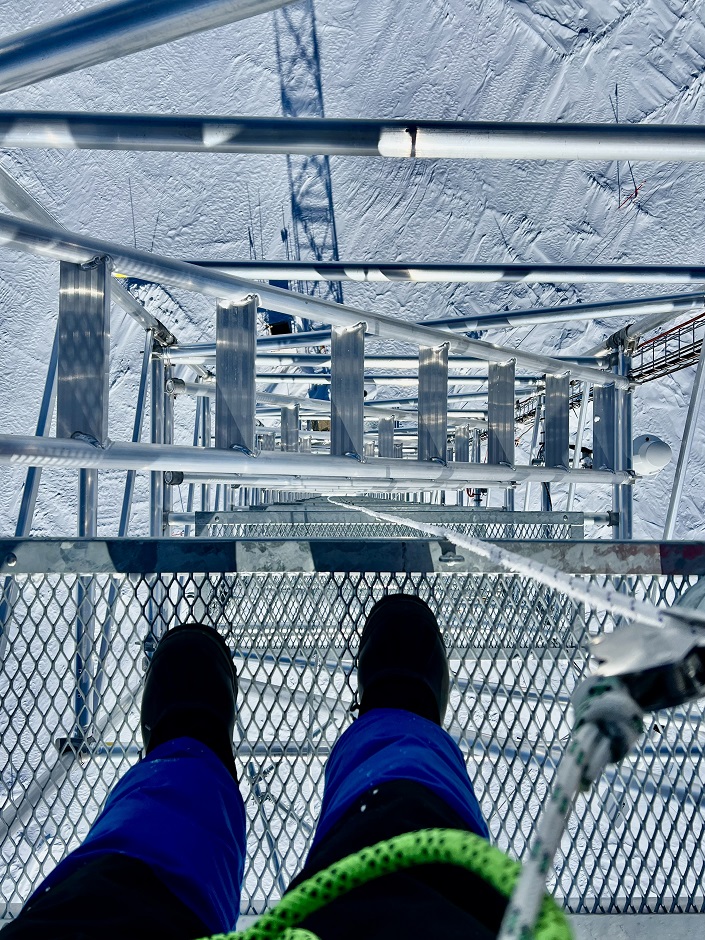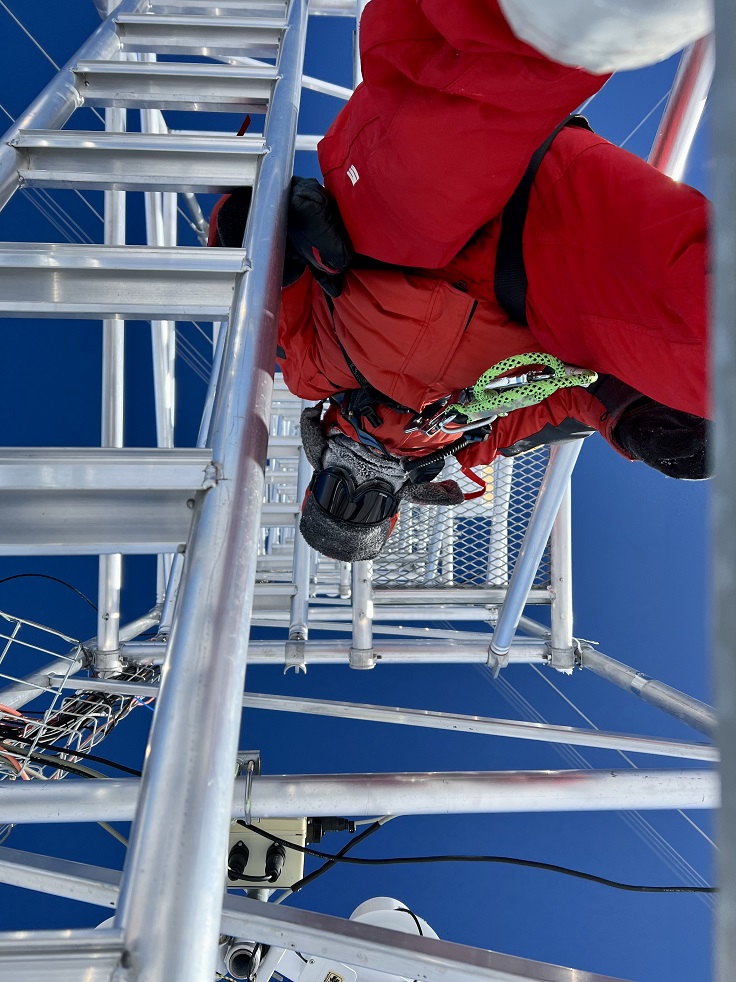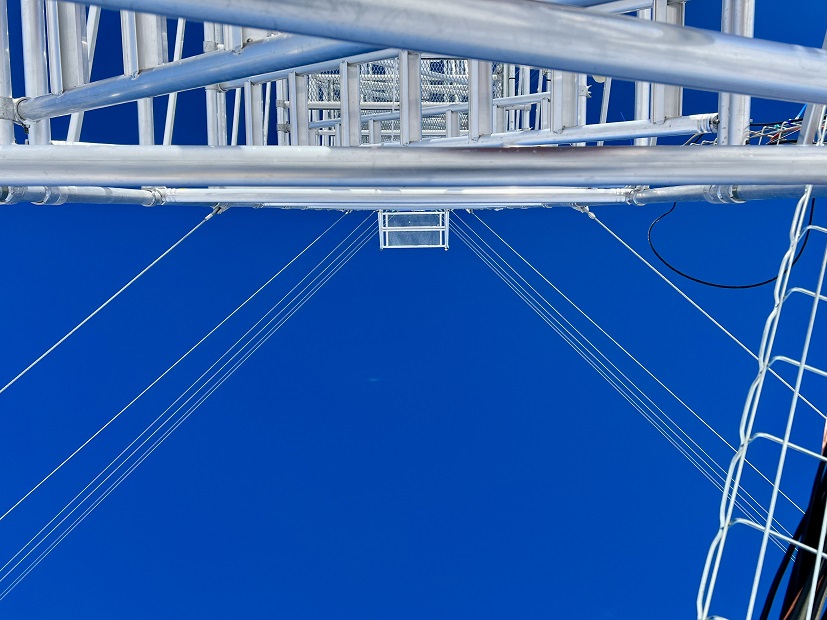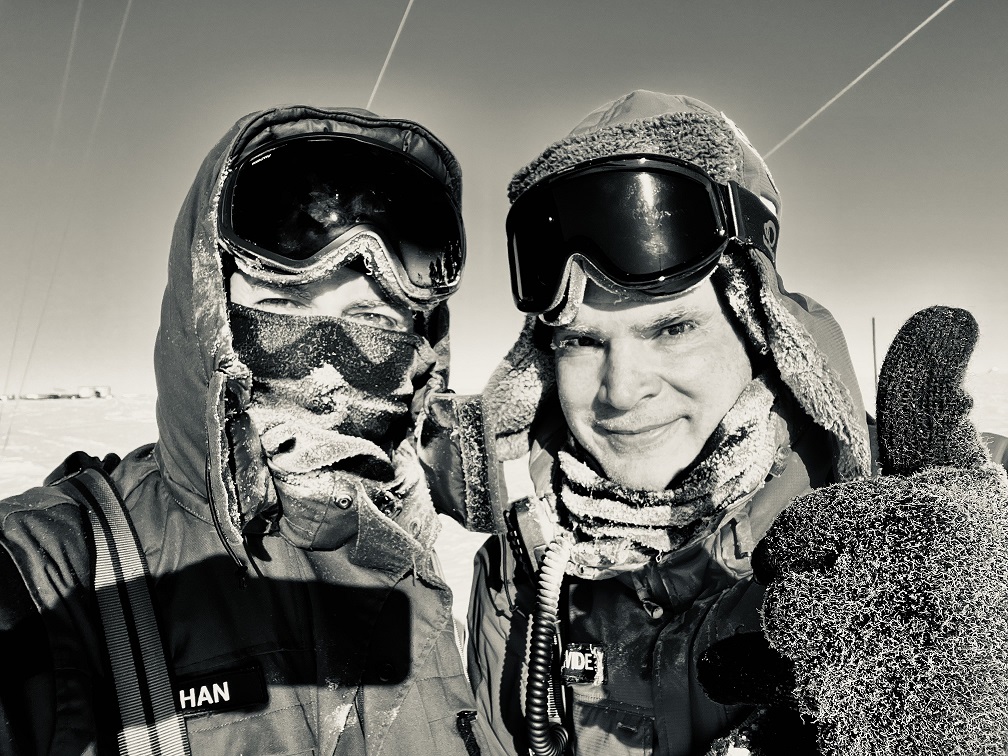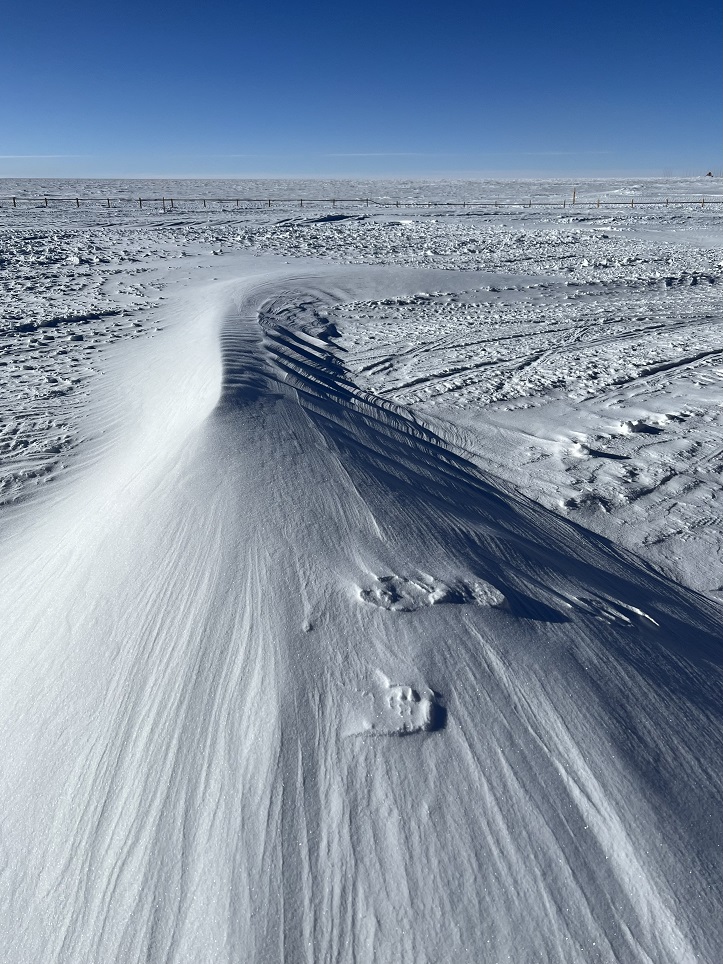I am going to introduce you to one of the most fascinating, and dangerous, buildings in Concordia Station: the American Tower.
It is not easy to find precise information about this tower. It is one of the oldest buildings on the base. In the early 2000s, even before the construction of the permanent station, this tower was built to house a NASA science project.
Afterwards, our American friends decided they had enough to do with their McMurdo and South Pole stations and left this strange structure to the French and Italians.
Located 1 km from the base, it was then 35 m high before being raised by about 15 meters.
It is now home to a number of meteorological measurement instruments, others dedicated to monitoring the movement and temperature of snow cover, as well as an ESA facility: DOMEX, which serves as a calibration site for radiometry satellites studying soil moisture or sea surface salinity.
Damien, one of our Glaciologists, and Davide, our mission leader, have to go there regularly to maintain the installation and, in particular, to defrost the measuring instruments. This is an operation that must be carried out at least once a week.
At the moment, this is still done under the sun, with actual temperatures of -40°C at the « hottest » part of the day, which gives felt temperatures of -50 to -65°C taking into account the windchill effect. And at the top of the tower? Well, at the moment, it’s worse. (During the polar night, it’s more complicated: it’s often warmer at the top of the tower than at the base, but with more wind, so…)
I’ll let you imagine what this defrosting exercise will mean during the polar night when we will have lost another 20 or 30°C of temperature.
That’s why this is one of the two facilities where it’s mandatory to go with at least two people, and three when it will be the polar night.
Four days ago, it was me who accompanied Davide.
Davide is Italian. He usually runs a particle physics laboratory in Padua. At Concordia, he holds the somewhat catch-all scientific position of « Electronics for science ». He is in charge of maintaining a whole bunch of scientific installations in a wide variety of fields: seismology, geomagnetism, atmospheric observation, meteorology…
He is also the one who has been appointed as the DC19 mission leader and we couldn’t imagine a better choice. But I’ll tell you about that another time…
For the moment, it’s time to come with us to the American Tower!
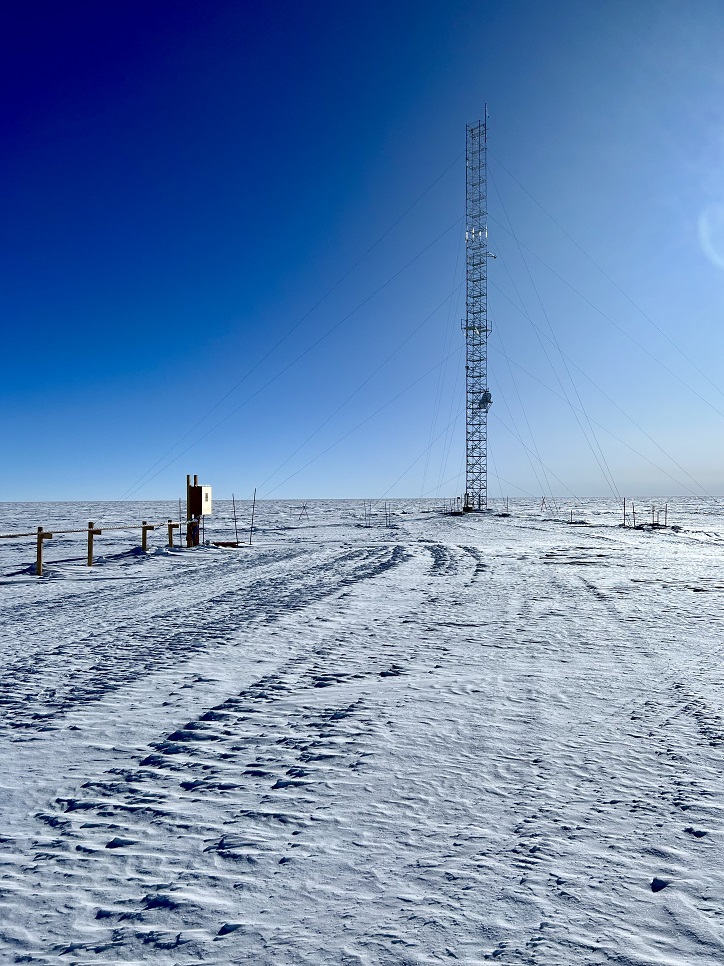
©Stéphane Fraize/Institut polaire français/PNRA
Like every scientific facility, the American Tower has a shelter that is heated (depending on the situation, to +4°C, +8°C or +15°C). Some are under the snow, others on the surface. And still others, like the American Tower’s one, were originally above ground and are now well below the snow level.
The first step is to go down into the shelter to fit ourselves with harnesses. At the base of the tower, we attach our harnesses to a « life line » that goes up to the top of the tower.



We can then start our ascent and Davide starts to defrost the sheaths and instruments as we go along. Normally he uses a large brush but this one was broken and, on this day, he did it all with his under-gloves. Luckily we had our heaters in our mittens.


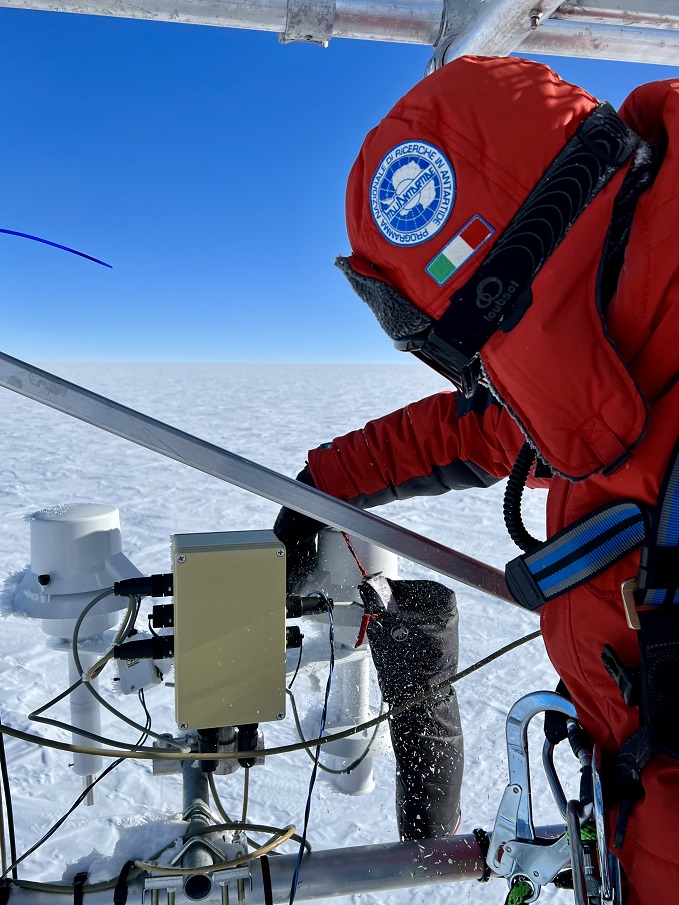
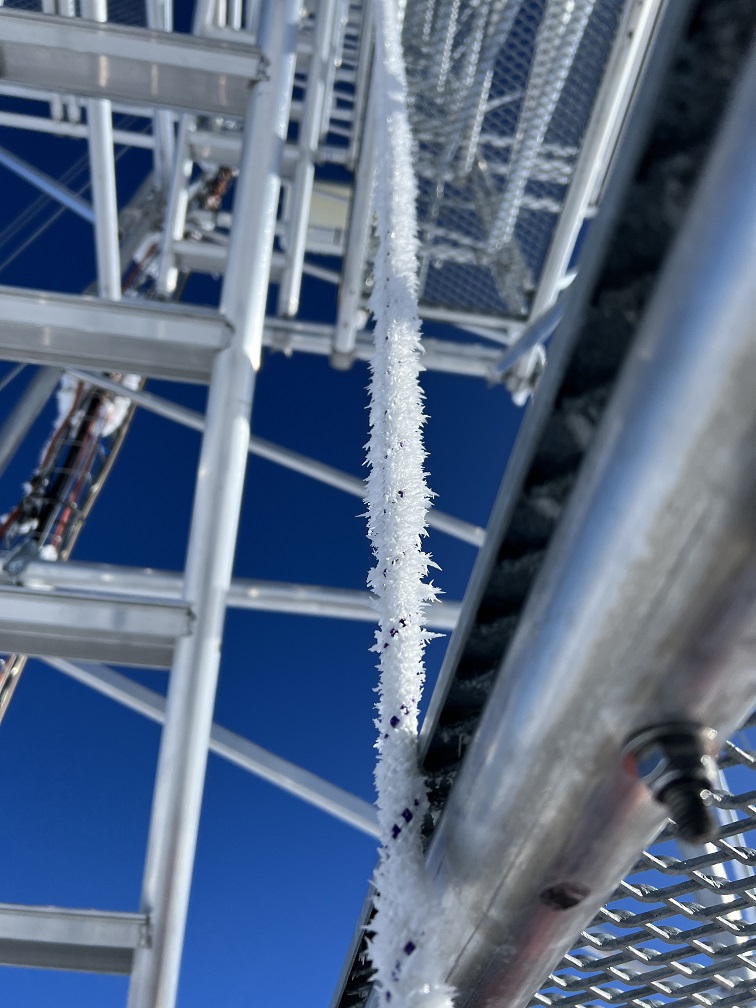
And so, landing after landing, we reached the top of the tower. Or almost, because the last two landings don’t have instruments and we weren’t going to be overzealous.
The weather was rather calm but, in spite of that, we could feel the top moving!

©Stéphane Fraize/Institut polaire français/PNRA
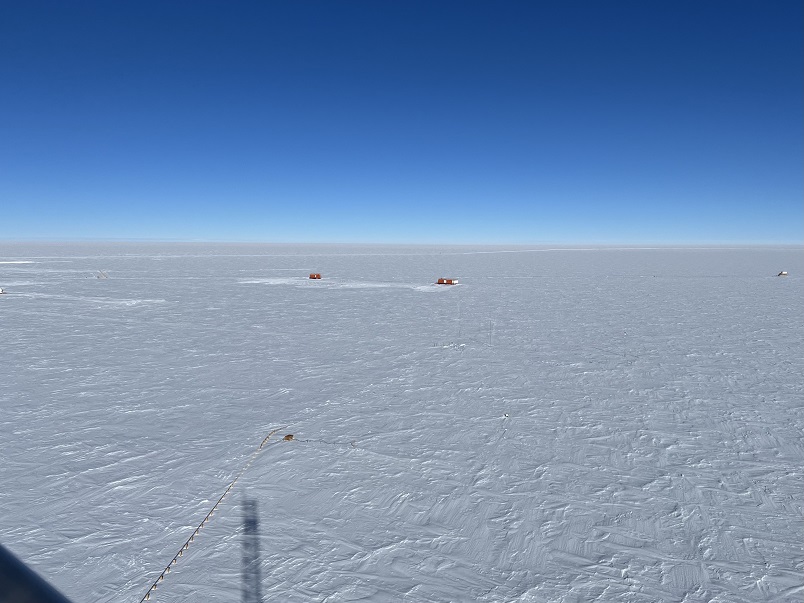
©Stéphane Fraize/Institut polaire français/PNRA

©Stéphane Fraize/Institut polaire français/PNRA


